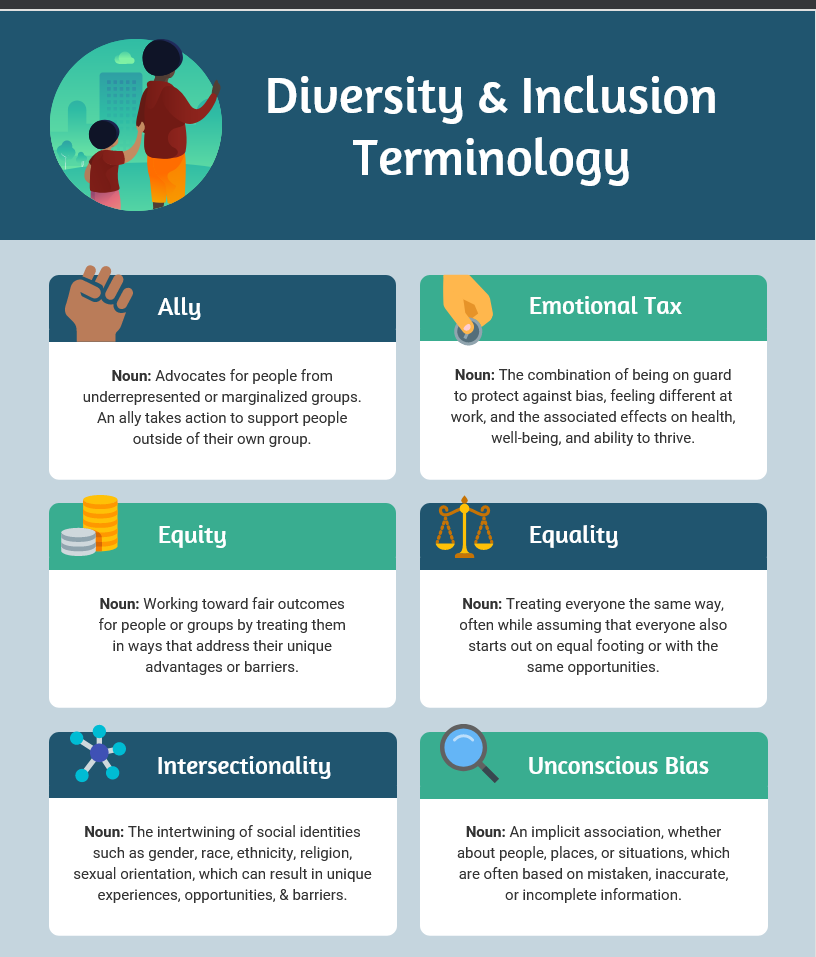Inclusion and Diversity
Introduction
It is more than just a numbers game.
Some work rituals can result in excluding a group of participants, like bonding over alcohol can exclude certain religious groups like Moslems.
Inclusivity and diversity includes age, physical ability, gender, culture, etc.
Terminology (Diversity & Inclusion)

(source: https://infograph.venngage.com)
Three stages to incorporating diversity and inclusion
i) inclusivity without diversity (
"...too often, a business's culture serves a narrowly defined demographic and welcomes others only if they are willing to conform to the prevailing workplace culture..."
Mohammad Chowhury, 2023)
ii) diversity before inclusivity (organisation sets hiring and promotion targets to increase diversity; however, they do not involve active participation; breed virtual signalling, ie people are seen as more useful because of their cultural background rather than professional experience; assumptions are made about how you identify yourself and how you are willing to represent a group based on one element of your identity, ie you may belong to a certain religious group but you are also a professional, eg a Moslem who is a digital expert.
Similarly, around gender:
"...Celebrating the appointment of a woman into senior roles does not necessarily address the issues of them being paid less than their male counterparts..."
Mohammad Chowhury, 2023
"...this involves a narrative of how numbers are changing (for example, gender pay gap, represented number of women or diverse cultural backgrounds) conveyed through careful optics that show that 'we are more diverse than before'. There is no formula for what makes an optimally diverse group. But when the numbers take over, employees are incentivised to meet the target rather than consider how workplace culture needs to evolve to support true inclusion..."
Mohammad Chowhury, 2023)
iii) inclusion by nature (where organisations appreciate that inclusivity must reflect the breadth and history of your population, ie including First Nations people through to recent migrants; the workforce needs to be
"...visibly multicultural, inclusive in behaviour and collectively diverse in thinking and perspective..."
Mohammad Chowhury, 2023
Organisations need to be
"...motivated more by egalitarian work ethic than achieving diversity key performance indicators..."
Mohammad Chowhury, 2023
Use of questions like 'where are you from?' helps define common threads so they can relate better to one another, rather than being an attempt to pry into origins.
People need to feel safe to discuss their differences.
Summary
Organisations
"...take the onus off the individuals and move beyond the virtue signalling to create truly supportive and diverse workplace cultures..."
Mohammad Chowhury, 2023
